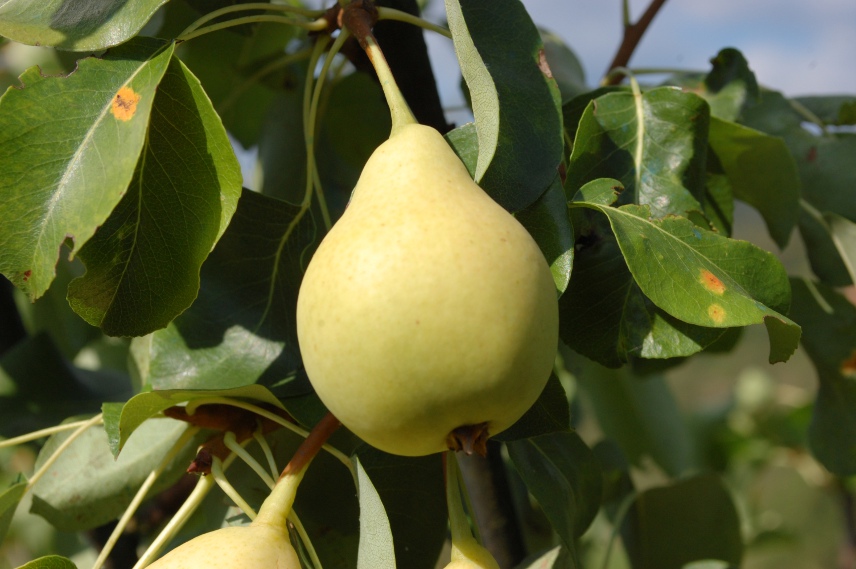︎︎︎ PERA BIANCHINA

La pianta madre è stata ritrovata nel comune di Città di Castello (PG); era però diffusa anche nell’area toscana della Valle del Tevere. L’origine è sconosciuta, ma venivano coltivate estesamente in quanto erano tra le prime pere a maturare. L’albero é mediamente vigoroso, a portamento assurgente e a produzione alternante. È abbastanza rustico e adatto alla coltivazione in alta collina. Il frutto La pezzatura è medio piccola e i frutti sono di forma piriforme media. La buccia è fine, di colore giallo chiaro omogeneo senza lenticelle evidenti, il peduncolo è medio, non molto grosso. La polpa è bianca, dolcissima, liquescente e molto profumata. Non presenta granulosità. Viene raccolta alla fine di giugno, per il consumo immediato o al massimo da conservare essiccata. È poco resistente al trasporto. Frutto prezioso per la sua precocità, deve il suo nome proprio al colore chiarissimo della buccia. Oltre al consumo fresco, dato il periodo di maturazione, questa pera può essere tagliata a fette, convenientemente essiccata al sole e conservata in sacchetti di cotone in un luogo asciutto e arieggiato. Per la sua ricchezza in succo è ottima per preparare torte e crostate, oltre che essere componente ideale per i gelati.
The mother plant was recovered in the area of Citta’ di Castello (Perugia) but this fruit was also widespread in the Tuscan part of the High Tiber Valley. Its origin is unknown but it used to be extensively cultivated because it was amongst the first pears to mature. The tree is moderately vigorous, with compressed habit and cropping on alternate years. It is quite hardy and suited for cultivation in high hill areas. The fruit is medium-small sized and it is of medium pear-like shape. The skin is thin, a light and even yellow without marked lenticels. The stem is medium, not too thick. The flesh is white, very sweet, melting and very aromatic. It has no grit cells. It is harvested at the end of June for immediate fresh eating or for drying. It does not travel well. It is a valuable fruit for its early maturation and it owes its name specifically to the very light color of its skin. Besides being suited for fresh eating – given its early maturing time – this pear can also be sliced and dried in the sun and then stored in cotton bags in a dry and ventilated room. Because of its richness, its juice is excellent for preparing tarts and pies; it is also an ideal ingredient for ice creams.